Learn the differences between leads, prospects, and opportunities. Understand how to turn leads into prospects and opportunities.
A lead generation website is a site designed to convert visitors into leads by piquing their interest in your business and then capturing their contact information. Across the site’s pages are lead magnets, web forms, and other features such as live chat that focus on getting the visitor to take your desired action — usually to submit their email or contact you directly. The purpose of a lead generation site is to increase the number of quality leads for your business.
Lead generation sites are meant to attract and convert the visitors who arrive onto your various website pages from your traffic sources like SEO or online ads. To convert these visitors, you offer valuable, relevant lead magnets (gated content) across your site that your target audience can receive by submitting their contact information into a lead capture form on the site.
To create or optimize your own lead generation website, first map your lead generation funnel and determine your traffic sources. Then identify key posts or pages that generate significant traffic and build a relevant lead magnet you can offer your visitors in return for a desired action, like giving you their contact details. The best lead generation websites will have similar but unique strategies for generating online leads specific to your ideal customer.
All lead generation websites serve as the catcher’s mitt in your online lead generation process, helping you collect lead contact information so you can nurture them using methods like email drip campaigns or direct outreach. However, creating and optimizing a lead generation website is only a step in the overall online lead generation process. If you want to learn that entire process, read our article on how to generate online leads.
Here we’ll give you some actionable ways to transform your website into a lead generating machine. Think of this as a chance to audit and improve your business’s website. After you enact these tactics, your website will capture more leads that you send to it. Feel free to use the below tactics independently or follow all of the actions we’ve laid out in the order they appear:
Your lead generation funnel represents your average lead’s journey from brand awareness to qualification. As leads move through the funnel toward taking your desired action, like submitting their contact info, they’re considered more qualified.
Here’s an example of a lead generation funnel:
Mapping your lead generation funnel is important when building a lead generation website because it helps you identify the actions and steps you want your leads to take as they move through the funnel. You can then put content in front of them and plan your own touchpoints to influence the actions you want the lead to take.
If you don’t have any traffic yet, determine how you want to get people from your target audience onto your website. You could pay for traffic through online ads, but that’s less sustainable than organic traffic methods like SEO. Once you build a blog, it continues attracting visitors passively. For paid ads, when you stop paying, the traffic stops with it.
Here are some common traffic sources to consider:
After you have some traffic coming to your site, conduct an audit of your traffic using a tool like Google Analytics. Figure out where your visitors come from — is it SEO traffic, ad traffic, or something else? Also, assess where most visitors are landing — which pages are getting the most traffic? Once you know this, you can focus your lead generation optimization efforts on these high-traffic pages, filling them with lead magnets.
It’s crucial to use your home page strategically to generate leads or build your email list. This list enables you to actively market to individuals who might have otherwise visited and left. Do this by adding a lead magnet offering to your home page and attaching a lead capture form to it.
Here are some home page offers that tend to perform well:
As for how to add this form, your content management system (CMS) likely gives you the option to embed it on your home page, and you can also use lead capture software to add the form. Make the form obvious and upfront to the visitor. Ideally, it should be the first thing they see and should clearly explain the value they’ll receive. Here’s an example of our email capture form:
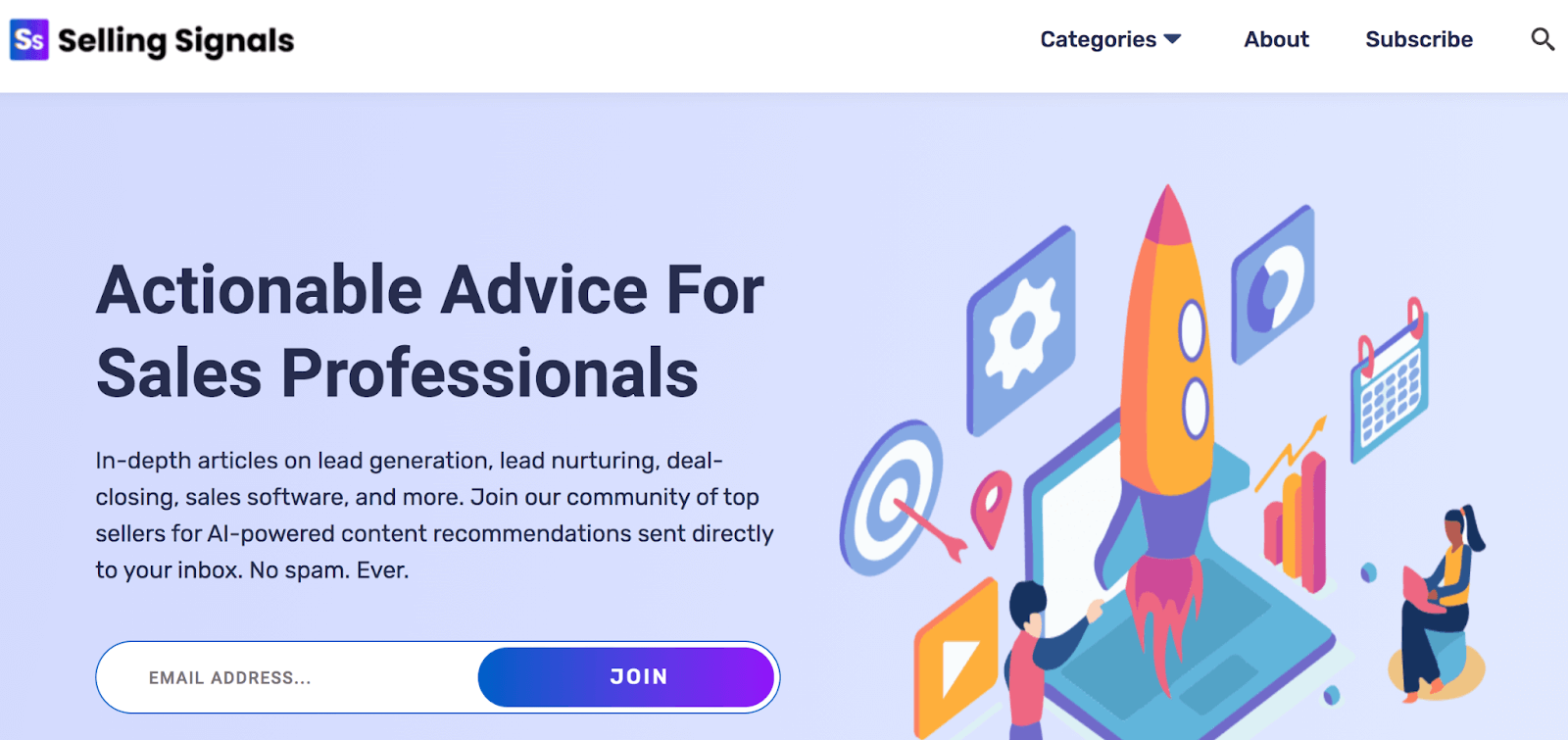
Also, consider using pop-ups or slide-ins — small windows that appear on the page after a certain time period. These direct the visitor’s attention to your lead magnet, the form, and the call-to-action (CTA) button. They can therefore be more effective than relying on visitors to locate the form themselves on a busy home page. Here’s an example of a pop-up email form done right:
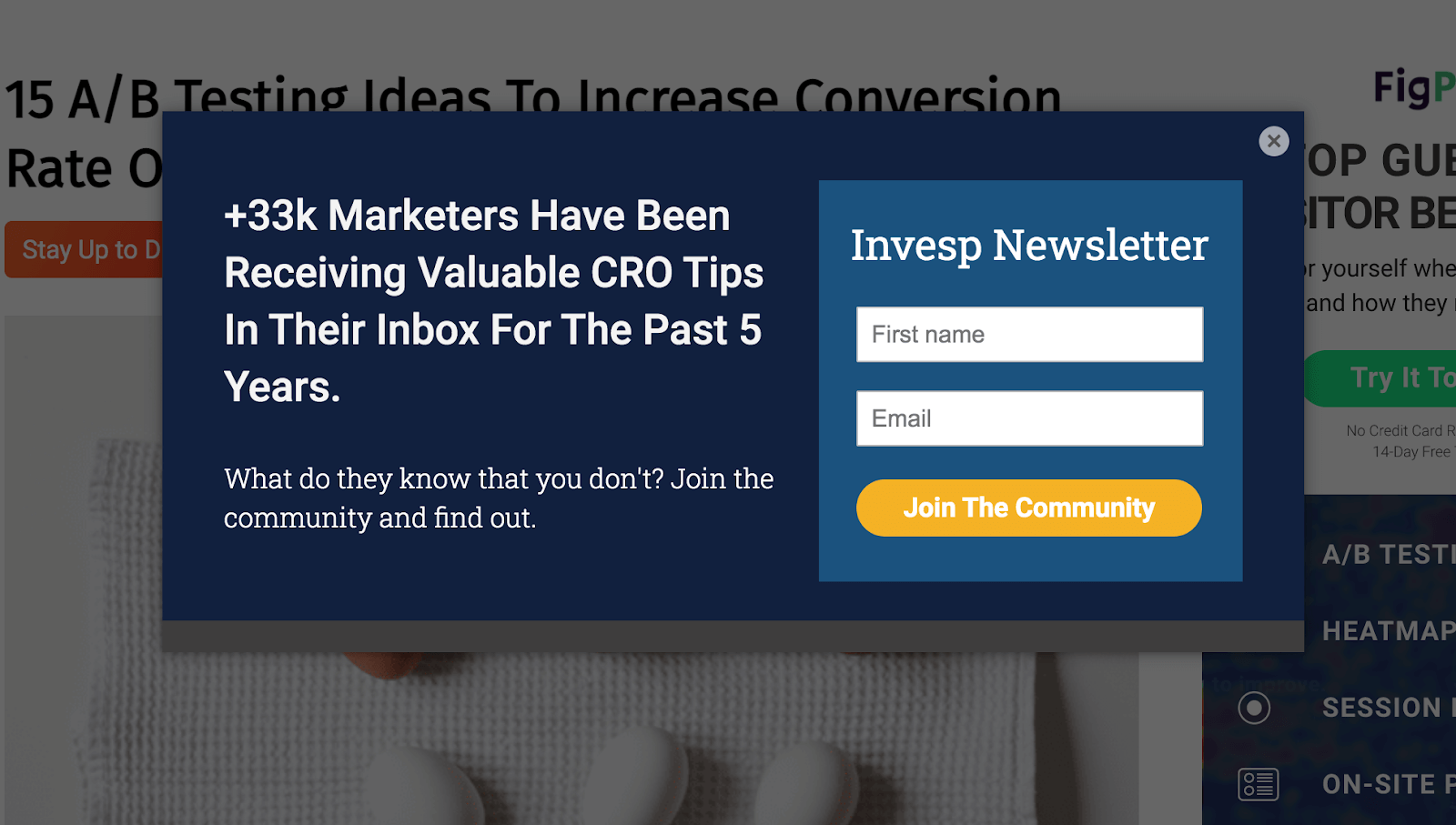
In addition to your home page, it’s important to put lead magnets on your most visited blog posts and pages (hence why a traffic audit is so crucial). Ensure that these magnets are relevant to the page offering them, and therefore to the current needs and interests of the visitor. This increases the chances they’ll click on it.
Here are some examples of lead magnets and where you’d offer them:
It pays to create multiple lead magnets so you have ones that are relevant to each page. You also need to direct a visitor’s attention to the lead magnet. You don’t want them to skim past it, so make it distinct from its surrounding environment using colors, arrows, or a pop-up feature.
With your relevant lead magnets created, the first place to offer them in return for your website visitor's contact information is directly on the post or page. To do so, use lead capture software native to your web builder or via a third-party app that lets you embed lead capture forms directly in the content, or as a pop-up that fires based on user interaction like a click trigger. This reduces the number of steps needed to have the lead take your desired action, like this example:
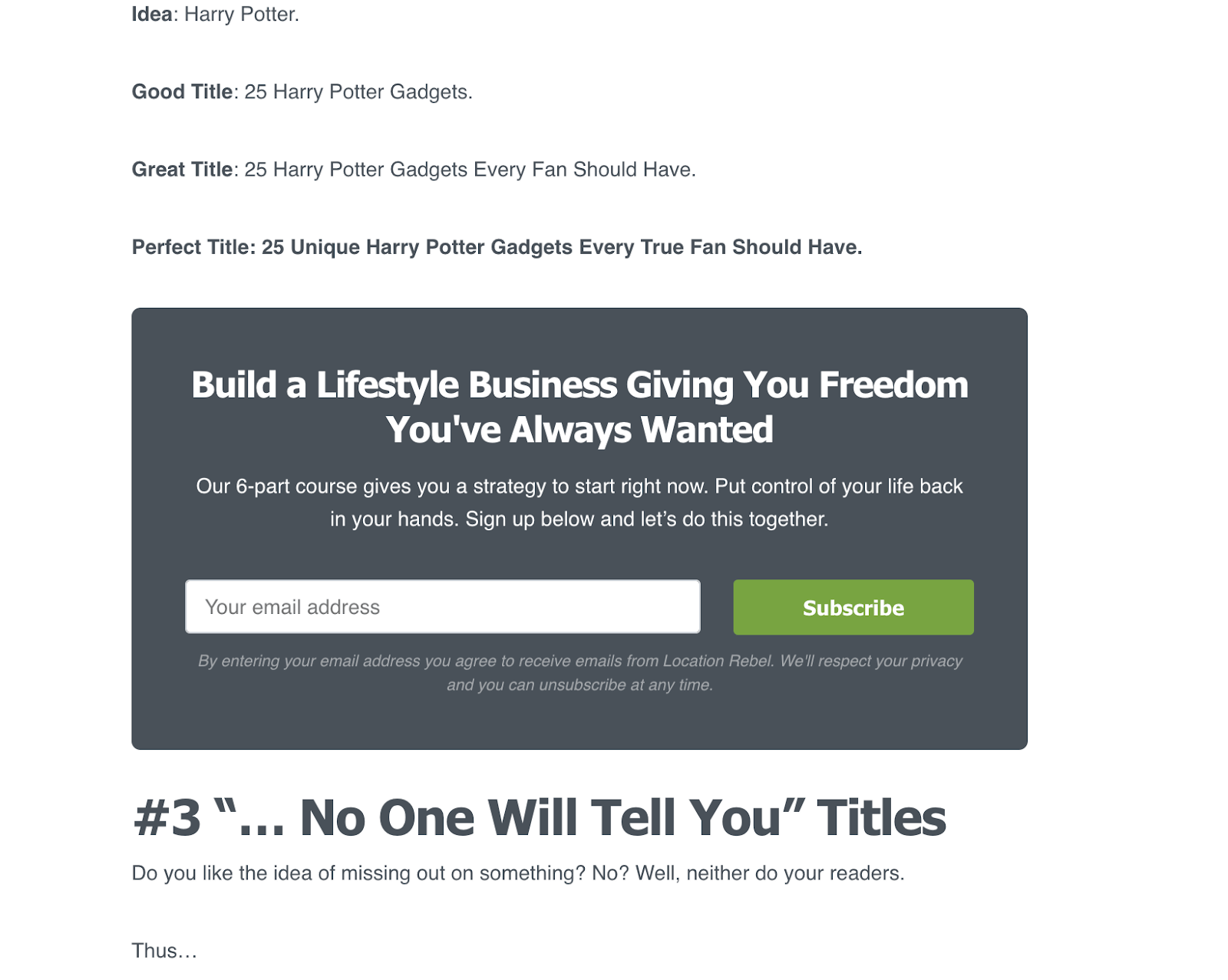
The two ways to offer your lead magnet on the post or page itself:
The value of in-line lead capture is that it reduces friction for the lead and may increase the chances of conversion. The downside, however, is that space is smaller than with a full-blown landing page, meaning you have less room for marketing or sales copy to sell the lead on your free offering.
When a visitor clicks a lead magnet in your PPC ad, your social media post, or even within a post or page, they can also be led to a landing page to claim the lead magnet. Your landing page should advertise the lead magnet the visitor saw, while also making it easy for them to grab it. The six parts of a landing page include the headline, the unique selling proposition, the lead generation form and lead magnet, supporting copy and the CTA button.
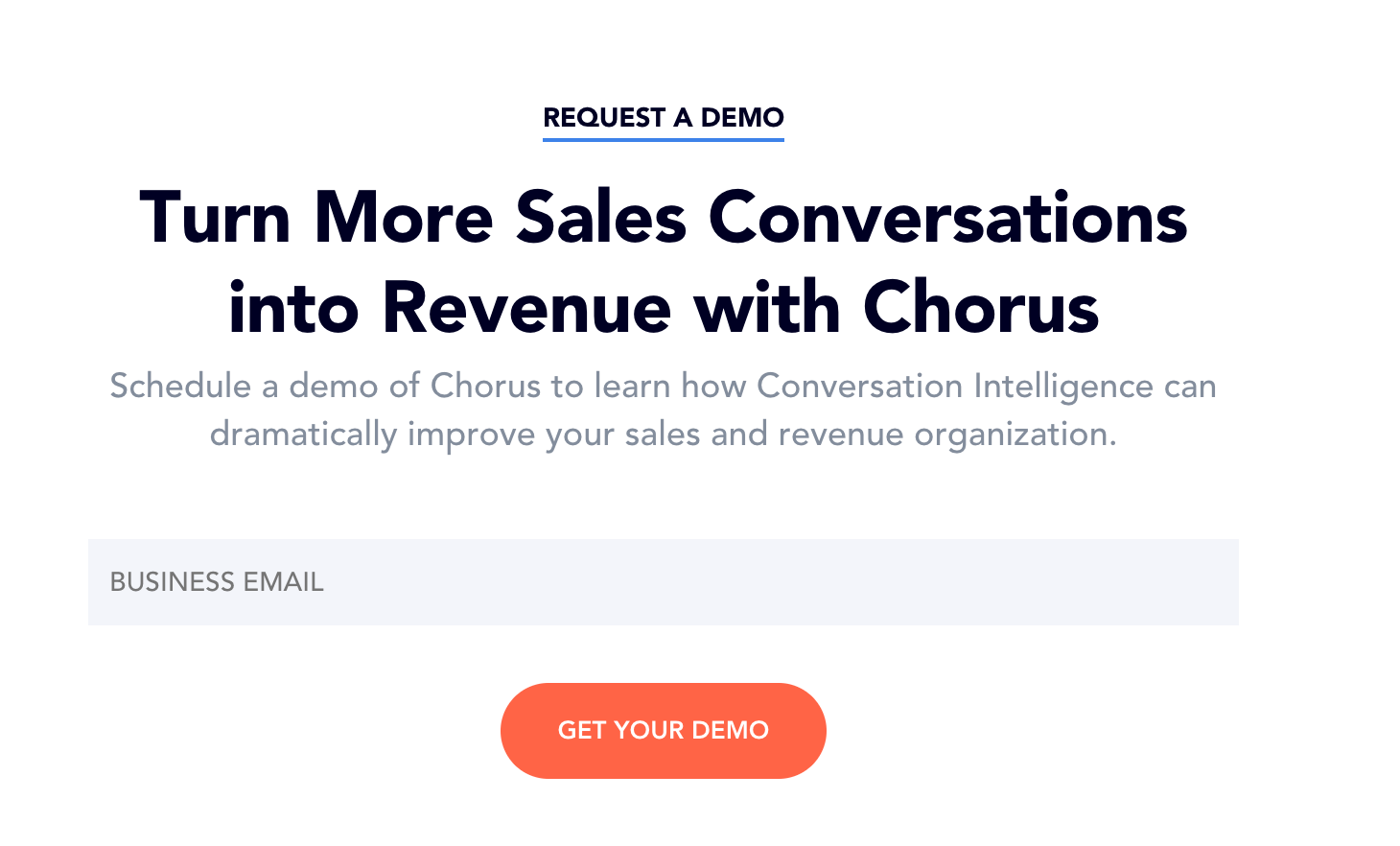
Here’s how to optimize the six components of a landing page:
The benefit of a landing page versus offering your lead magnet using in-line lead capture is that there is more room to sell your lead on the offering. The downside, however, is that it can add an additional step the lead must take to give you their contact information, meaning more visitors may drop off before getting the lead magnet.
A CTA consists of messaging telling the visitor to take an action and the digital element they must click to take it. It gives visitors instructions on how to get their lead magnet. Typically, the messaging is superimposed on a button, but CTA elements can also be hyperlinks. Either way, the CTA should be direct and simple to follow. Use strong action words to achieve this.
Here are some examples of action words in CTAs categorized by purpose:
As you’ll notice, many of the action verbs are followed by the actual item the visitor will receive. Your marketing copy around the CTA buttons should serve the purpose of building excitement around your offer so that when you make your ask, they’re warmed up and ready to click.
To create this excitement with your landing page copy, focus on talking about relevant benefits that your target audience wants. Write this in short, punchy sentences. Also, try including some testimonials on your landing pages to demonstrate to visitors that you're a trustworthy and dependable business.
Live chat widgets allow you to directly communicate with visitors, answer their questions, and point them in the right direction. Plus, you can configure them so users must submit their email addresses to enter live chat. It’s most effective on pages where visitors spend a lot of time browsing and likely have questions, such as on home or product pages. For example, see the live chat window in the bottom right corner of the site below:
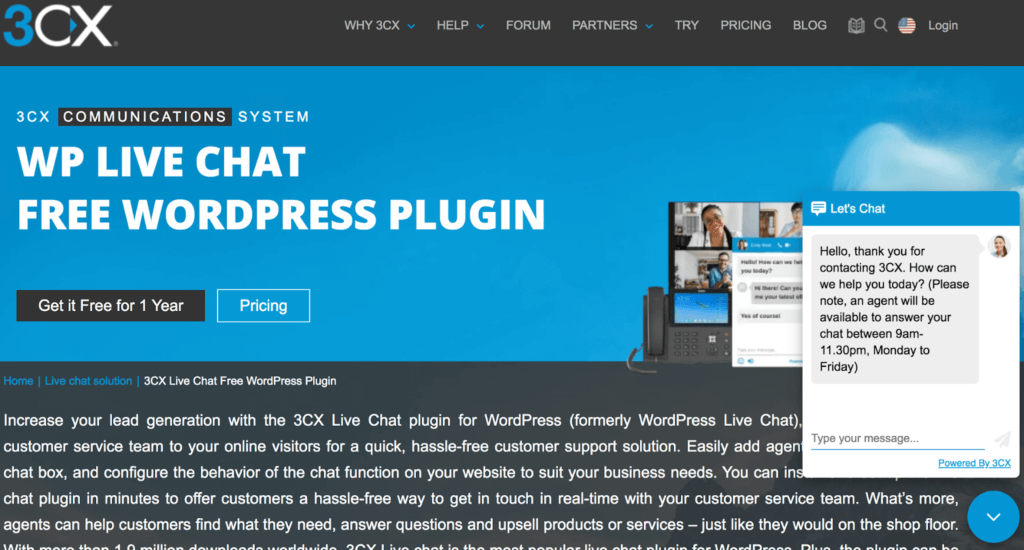
Live chat is easy to set up thanks to the availability of live chat software. The top features offered by these applications typically include multi-platform functionality that supports customers through different devices or platforms such as SMS, Facebook, or your website. Fully automate your customer service communication with built-in responses and instructions for your client’s needs.
The top live chat software options are:
Larger companies with heavy traffic might have customer service employees dedicated to fielding visitor queries. Most small businesses give this responsibility to a few sales reps, who reply to the most promising messages. Because of the workload, some companies use chatbots, which automate the chat with programmed responses to qualify visitors before involving a rep.
Another way to capture website leads outside of your home page and other pages or posts is to create a dedicated subscribe page with the same or similar offering as your home page. Ideally, this is a recurring offering such as an industry-relevant newsletter. Add your subscribe page to your website navigation like we've done below:
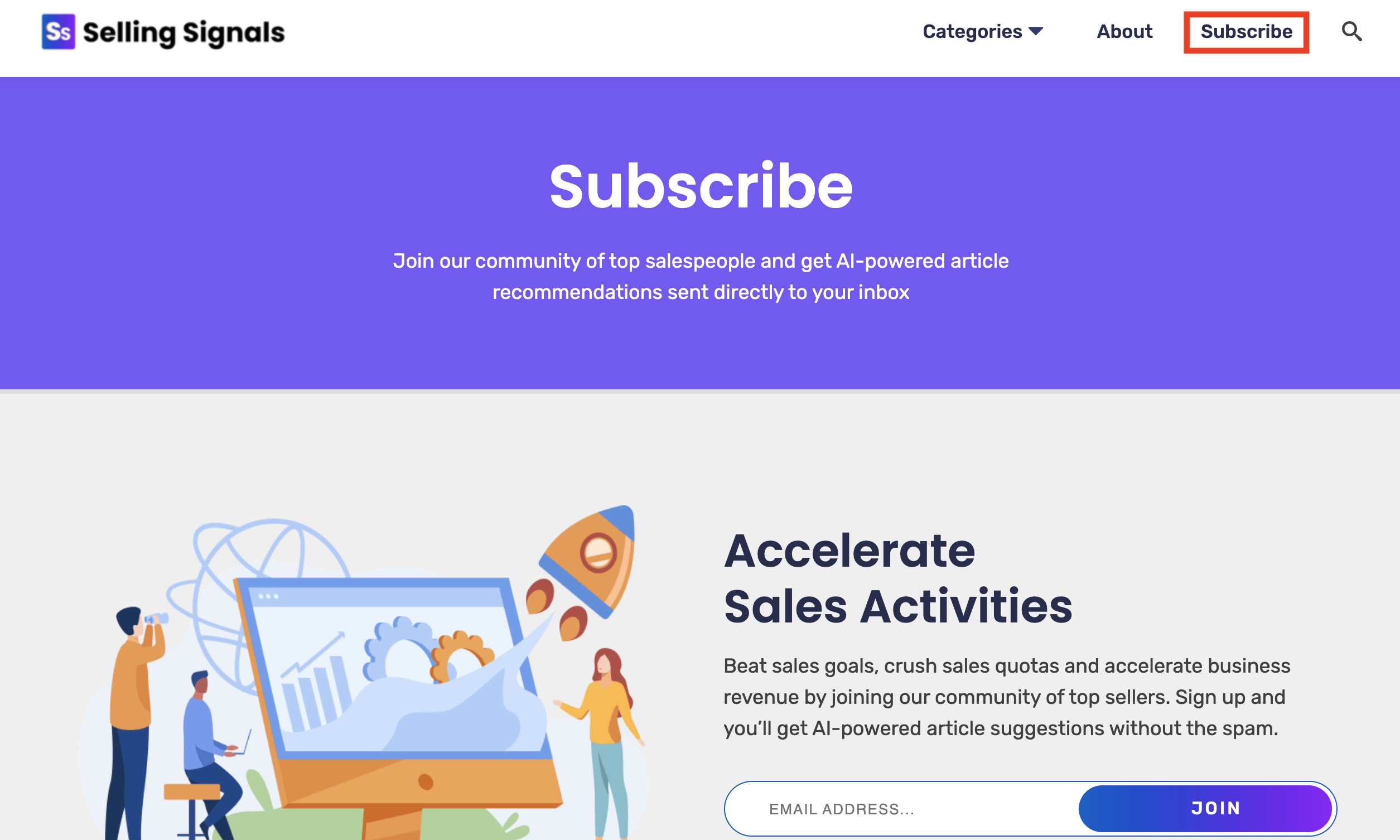
SEO stands for search engine optimization, and it plays a big role in determining how many people come to your site. Websites that are SEO-optimized will have pages that rank higher in search engines like Google, so more people will see the website’s pages in the search results and click on them. There are countless techniques for improving your website’s SEO.
Here are five highest-ROI methods to improve your lead generation website’s SEO:
SEO can expand your brand’s visibility and reach and bring more potential leads to your website. Besides the strategies like creating a blog or getting backlinks, you should also ensure everything is technically sound on your website.
A website that’s optimized for speed, stability, and structure is more effective at keeping your visitors engaged and moving through your site. Some methods for helping your site load faster are technical in nature, like file combination and browser caching, while others focus on making your visitors’ experience throughout the website logical.
The best tips for optimizing website performance are:
Fix broken links, delete unused plug-ins, then clean your database, compress your images, and cache your site with a third party plug-in, while using a site structure that gives visitors the best experience possible. This allows visitors to easily navigate your site and find the information they’re looking for. It also helps your SEO by enabling Google to more easily crawl your site.
Consistently A/B test different components of your lead generation website, from your traffic sources and CTAs to your landing page layout. Lead generation website A/B testing is when you split your audience into two and give them each different experiences on a part of your website. A simplistic example would be half of the visitors seeing a red CTA button and the other half seeing a yellow one. Holding all else constant, you’d check which led to more conversions.
Here are five of the most crucial things to test on your website:
Testing will help you slowly approach optimization. For example, you might test the current phrasing of your home page’s email capture form of “get a free demo” against “see it in action.” If you find that compliance is higher with the second, you can change your phrasing and enjoy the higher conversion rate.
It’s helpful to see recommendations for optimizing a lead generation website put into practice. With that in mind, we’ve highlighted three websites that are following many of the above best practices for generating leads with their pages and posts. We’ll tell you what we like about them so that you can replicate their tactics on your own website.
A website optimized for generating leads can help you reduce your cost per lead and increase the number of leads your business earns. Common tactics for this optimization include following SEO best practices, creating landing pages, and offering relevant lead magnets throughout the site. Now that you know the necessary strategies, start upgrading your website and check out our article on lead qualification to begin qualifying the identified leads from your site.
This article was written by Sam Rinko and updated by Allyssa Haygood-Taylor.